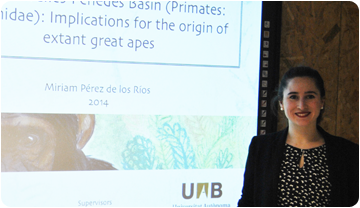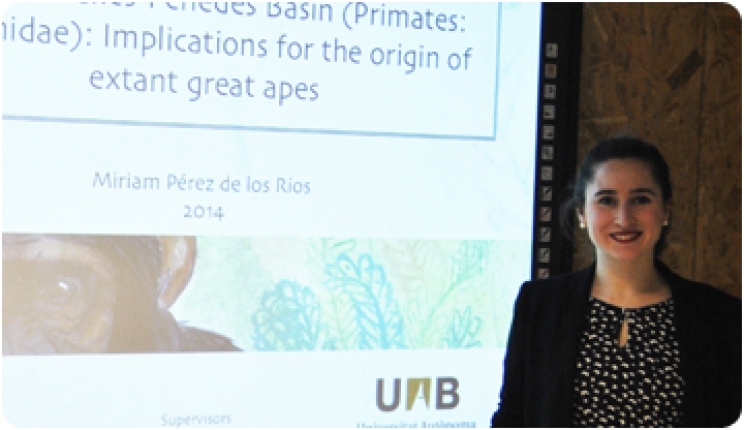
The researcher Miriam Perez de los Rios achieved an excellent “cum laude” for her doctoral dissertation describing the cranial and dental remains of the Miocene hominoid species from Vallès-Penedès basin with the aim to investigate their phylogenetic position. The work was directed by Salvador Moyà-Solà, director of the Catalan Institute of Palaeontology Miquel Crusafont (ICP) and David M. Alba, head of the research group of Neogene and Quaternary Faunas of the same centre.
Entitled "The craniodental anatomy of Miocene apes from the Vallès-Penedès Basin: Implications for the origin of extant great apes " the dissertation of the nowadays PhD Miriam Pérez de los Ríos includes a description of somepreviously unpublished mandibular remains, as well as an exhaustive description of all the available cranial remainsof Miocene hominoids available from this area. Non-invasive techniques such as computed tomography were used for their study in order to observe the internal craniodental morphology.
The studied remains were compared with other extant and extinct hominoids to evaluate previously proposed phylogenetic hypotheses and taxonomic schemes of this group that includes five species and four different genera of the subfamily Dryopithecinae: the Middle Miocene Pierolapithecus catalaunicus, Anoiapithecus brevirostris andDryopithecus fontani, included in tribe Dryopithecini, as well as Hispanopithecus laietanus and H. crusafonti, included in tribe Hispanopithecini.
A mosaic of primitive hominoid features and more derived crown-hominoid features characterize these taxa, indicating that they should interpreted as basal members of the great ape and human clade (ie as, stem hominids).










